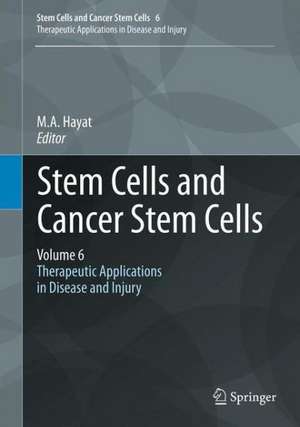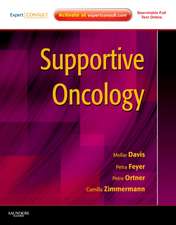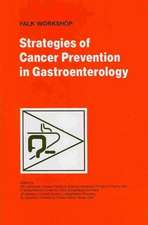Stem Cells and Cancer Stem Cells, Volume 6: Therapeutic Applications in Disease and Injury: Stem Cells and Cancer Stem Cells, cartea 6
Editat de M.A. Hayaten Limba Engleză Hardback – 29 feb 2012
| Toate formatele și edițiile | Preț | Express |
|---|---|---|
| Paperback (1) | 1322.55 lei 38-44 zile | |
| SPRINGER NETHERLANDS – 23 aug 2016 | 1322.55 lei 38-44 zile | |
| Hardback (1) | 1433.10 lei 6-8 săpt. | |
| SPRINGER NETHERLANDS – 29 feb 2012 | 1433.10 lei 6-8 săpt. |
Preț: 1433.10 lei
Preț vechi: 1508.52 lei
-5% Nou
Puncte Express: 2150
Preț estimativ în valută:
274.22€ • 287.08$ • 226.90£
274.22€ • 287.08$ • 226.90£
Carte tipărită la comandă
Livrare economică 05-19 aprilie
Preluare comenzi: 021 569.72.76
Specificații
ISBN-13: 9789400729926
ISBN-10: 9400729928
Pagini: 450
Ilustrații: XXIII, 448 p.
Dimensiuni: 178 x 254 x 32 mm
Greutate: 1 kg
Ediția:2012
Editura: SPRINGER NETHERLANDS
Colecția Springer
Seria Stem Cells and Cancer Stem Cells
Locul publicării:Dordrecht, Netherlands
ISBN-10: 9400729928
Pagini: 450
Ilustrații: XXIII, 448 p.
Dimensiuni: 178 x 254 x 32 mm
Greutate: 1 kg
Ediția:2012
Editura: SPRINGER NETHERLANDS
Colecția Springer
Seria Stem Cells and Cancer Stem Cells
Locul publicării:Dordrecht, Netherlands
Public țintă
ResearchCuprins
I Embryonic stem cells.-1 Propagation of human embryonic stem cell: role of tgf β.-2 Self-renewal of embryonic stem cells: cell cycle regulation.-3 Gene expression and epigenetic signatures of germ cell-derived pluripotent stem cells and embryonic stem cells.-4 Human embryonic stem cell bank : implication of human leukocyte antigens and abo blood group antigens for cell transplantation.-5 Differentiation of embryonic stem cells into glutamatergic neurons (methods).-6 Differentiation of embryonic stem cells into endoderm-derived hepatocytes.-7 Differentiation of embryonic stem cells into cardiomyocytes: role of ouabain.-8 Function of myc for generation of induced pluripotent stem cells masato nakagawa and shinya yamanaka.-9 Differentiation of human pluripotent stem cells into retinal cells.-10 Derivation and invasive function of trophoblast from human pluripotent stem cells. II Mesenchymal stem cells.-11 Differences between germ-line stem cells and multipotent adult germ-line stem cells role of micrornas.-12 Molecular and signaling pathways that modulate mesenchymal stem cell self-renewal.-13 The biology and regenerative potential of stem cells and their mesenchymal progeny.-14 Mesenchymal stem cells: clinical applications (an overview).-15 Mesenchymal stem cells for the treatment of cancer.-16 Treatment of neurodegenerative pathologies using undifferentiated mesenchymal stem cells.-17 Utility of mesenchymal stem cell therapry in type 1 diabetes.-18 Differentiation of mesenchymal stem cells into adipocyte lineage: role of cytoskeleton-associated proteins.-19 Epithelial-mesenchymal transitionand metastasis: role of dicer expression.-20 Mouse bone marrow derived mesenchymal stem cells.-21 Adhesion and osteogenic differentiation of human mesenchymal stem cells: supported by b-type carbonated hydroxylapatite.-22 Immunomodulatory potential of mesenchymal stem cells on microglia.-23 Senescence of human umbilical cord blood-derived stem cells: role of histone deacetylase inhibition through regulating micrornas.-24 Stem cells in the skin.III. Hematopoietic stem cells.-25 Donor policies for hematopoietic stem cell transplantation.-26 Mobilization of hematopoietic stem cells in patients with multiple myeloma utilizing granulocyte growth factor combined with plerixafor.-27 Role of stem cells in the pathogenesis of copd and pulmonary emphysema.-28 Migration of stem cells – role of the rhoa / rock i pathway (method).-29 Hematopoietic stem/progenitor cells: response to chemotherapy.-30 Regulation of stem cells by the endocannabinoid system.-31 Chronic lymphocytic leukemia: allogeneic stem cell transplantation.-32 Peripheral blood monocytes can be induced to acquire stem cell-like properties.-33 Somatic cell reprogramming: role of homeodomain protein nanog.-34 Inhibition of breast tumor stem cells expansion by the endogenous cell fate determination factor dachshund.-35 Parkinson’s disease and stem cells.-36 Therapeutic applications of induced pluripotent stem cells in parkinson’s disease.-37 Modeling neurodegenerative diseases using pluripotent stem cells. Index.
Textul de pe ultima copertă
This book of the multi-volume series on stem cells and their cancerous counterparts features an in-depth explanation of the differences between pluripotent, multipotent and unipotent stem cell varieties. The specific types of stem cell singled out for discussion in this sixth volume include human mesenchymal, germ cell-derived pluripotent, induced pluripotent, human umbilical cord blood-derived, breast tumor, and hematopoietic stem cells. Human embryonic stem cells and their applications receive particular attention, with explanations of the process of embryoid body formation and the self-renewing capability of human embryogenic stem cells. Additional contributions examine the influence of TGF-beta on the propagation of human embryonic stem cells, and the mechanisms by which these cells differentiate into their four secondary incarnations, neurona, hepatocytes, cardiomyocytes, and retinal cells. With a clear exposition of donor policies for hematopoietic stem cells to complete the package, this sixth volume in the series will strengthen STEM’s reputation for varied, yet comprehensive coverage of the topic.
Caracteristici
Treatment of cancer patients Methods for tissue engineering Role of growth promoting factors in cancer Treatment of injuries using cell therapy Extensively illustrated with color figures






















